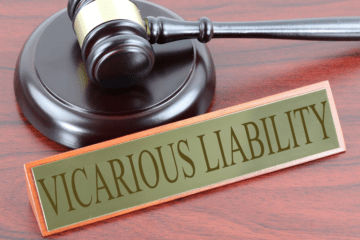
Legal Damages
In order to recover legal damages from the defendant, the plaintiff needs to prove that he had suffered a legal injury because of the wrongful act of the defendant’s wrongful act and the defendant’s act has resulted in violation of plaintiff’s right.
Thus, the term ‘injury’ means violation of the plaintiff’s right. If due to defendant’s act or omission the plaintiff had suffered some actual damages but there was no violation of his legal right, then the defendant cannot be made liable and no claim would lie against him.
This can be explained by two legal maxims, “Injuria Sine Damnum” and “Damnum Sine Injuria”
Injuria Sine Damnum
“Injuria” means injury, “Sine” means without and “Damnum” means damages, thus “injuria sine damnum” means injury without damages. Basically, it means violation of legal rights without any harm, loss, or pecuniary damage. For making the defendant liable there must be infringement of legal right otherwise the defendant can’t be held liable merely on the basis of damages suffered by the plaintiff.
It is based on the principle of law that if a person exercises his rights without causing violation of other’s rights, then there will be no action arise against him. This maxim covers the cases which are actionable even without the proof of any loss or harm to the plaintiff.
Case Law:
Ashby vs Whyte[i], in this case, the defendant who was a returning officer in Parliamentary elections had maliciously restricted the plaintiff from exercising his right to vote even when his name was written in the voter’s list. The plaintiff filed suit against the defendant. The defendant contended that the action brought by him was not maintainable as the plaintiff had not suffered any actual damages. The court held the defendant liable because the plaintiff’s right to vote was infringed due to the wrongful act of the defendant.
Marzette vs Williams[ii], in this case, the plaintiff sued the banker because he wrongfully disallowed the cheque presented by the customer even though there was a sufficient amount in the account. It was a clear violation of plaintiff’s right thus the court held the defendant liable even though he hadn’t suffered any actual damage due to the wrongful act of the plaintiff.
Bhim Singh vs State of J&K[iii], in this case, Mr. Bhim Singh who was an MLA in J&K was arrested and wrongfully prevented from attending the session of legislative assembly because of which he was not able to cast his vote. Though the person to whom he wanted to vote won but his legal right was infringed because even after 4 days of his arrest he was not presented before the court. The court held that the plaintiff was entitled to get reasonable compensation.
Damnum Sine Injuria
The maxim “Damnum Sine Injuria” literally means damages without injury. According to this if the defendant’s act had not infringed any legal right of the plaintiff, even though the plaintiff had to suffer actual damages of harm, then he could neither sue the defendant nor recover any damages. It is based on the principle that merely on the basis of pecuniary damages the defendant could not be held liable until it is accompanied by any legal injury or violation of right. In other words, we can say that causing damage or loss would not be actionable in tort unless there has been a violation of the plaintiff’s legal right.
Case Law:
Gloucester Grammar School[iv], in this case, the defendant was a school teacher who had started a school because of which the plaintiff had to reduce its school fees from 40 pence to 12 pence per student per quarter. Though the plaintiff had suffered pecuniary damage because of the defendant but there was no infringement of his right, thus the court held that the defendant was not liable.
Anand Singh vs Ramchandra[v], the defendant constructed two walls on the either side of his house which obstructed the flow of drain water due to which the plaintiff’s wall was damaged and he had to suffer loss. In this case, the court held that as there was no violation of right of the plaintiff so the defendant could not be held liable.
Difference between “Injuria sine Damnum” and “Damnum Sine Injuria”
| S.No. | Injuria sine Damnum | Damnum Sine Injuria |
| 1. | It means a legal injury is caused to the plaintiff but no actual damages has been suffered by him. | On the other hand “Damnum Sine Injuria” means that there was no legal injury caused to the plaintiff. |
| 2. | The plaintiff is entitled to get compensation. | Not entitled to get compensation. |
| 3. | It is for legal wrong for which an action can be brought against the defendant. | While it is for moral wrong for which no action can be brought against the defendant. |
Refrences:
(i) (1703) 2 Ld. Raym 938 (955)
(vi) Dr. N.V. Paranjape, Law of Torts (4th ed. 2019)




0 Comments